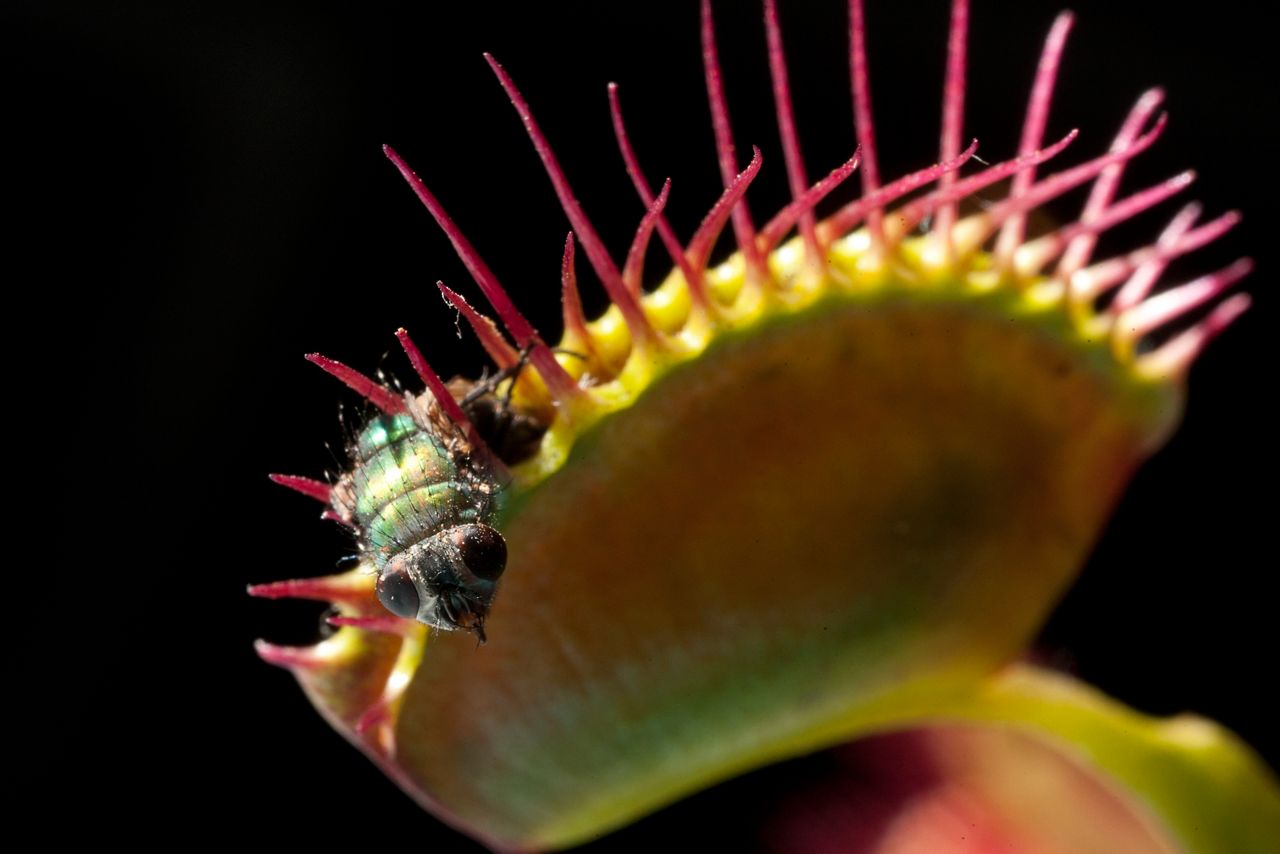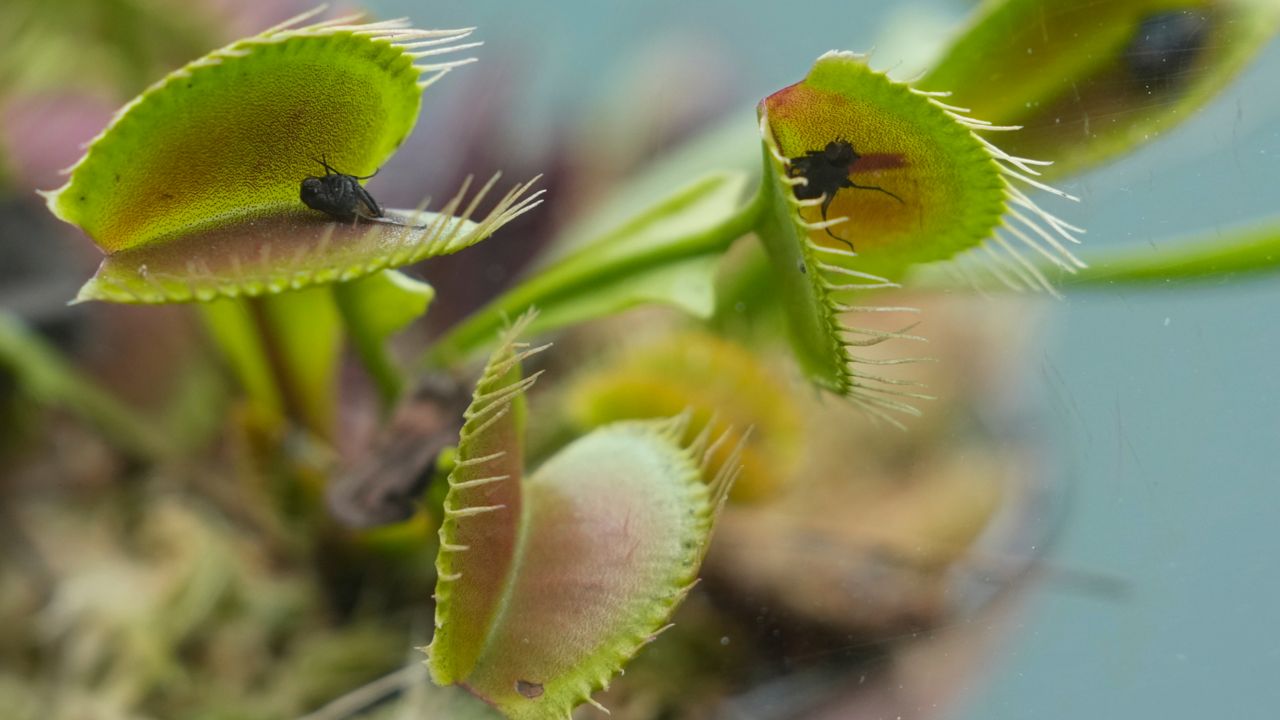The Venus flytrap, a perennial herbaceous carnivorous plant, is widely recognized. It’s so well known in popular culture there have been movies and Broadway musicals written about it.
However, it is only native to a small area, the Coastal Plain and Sandhills of North Carolina and South Carolina.
The Venus flytrap is a flowering plant that is best known for its carnivorous eating habits. It is composed of two hinged lobes at the end of each leaf, creating a “trap” structure.
It contains hair-like features, known as trichomes, on the inner portion of the lobes. These trichomes trigger the lobes to snap shut when its prey comes into contact with them.
This plant has evolved to only snap shut when prey has touched it multiple times, thus saving energy and not shutting if prey isn’t there. Once snapped shut, the hinged traps are edged with small bristles that interlock, ensuring the prey cannot escape.
However, it does not harm the pollinators. Researchers at NC State found “that the flowers sit six to 10 inches above the trap-like leaves, which are close to the ground. The plants are pollinated by flying insects, but they mostly consume crawling insects.”
What makes this plant even more unique is its active use of motion to trap its prey, which is a rare characteristic among carnivorous plants in the wild.
According to the College of Natural Resources at NC State University, Venus flytraps are endemic only to the Coastal Plain and Sandhills of North Carolina and South Carolina, specifically, the radius within 75 miles of Wilmington, NC. In recent years, it has been introduced to other states, including Florida and New Jersey.
For the plant to flourish, it needs a specific environment, including moist, acidic soil that may be poor in nutrients. To supplement its diet, the plant feeds on insects and arachnids. They thrive in open understory forests with lots of sun that natural fires have created.

It is found in 18 counties in North Carolina and three counties in South Carolina. Located close to Myrtle Beach, SC, Horry County is home to them.
As mentioned previously, Venus flytraps need specific environments to grow, in particular an open understory feeding sunshine lower to the ground. In the past, natural fires have provided this for the plant. However, with humans encroaching on their natural habitats, this natural fire has been suppressed, allowing shrubs and trees to grow, blocking the sun from the lower part of the forest.
Thanks to its popularity, the plants are poached frequently. They will be ripped out of their native habitat and used in the horticulture trade, as well as pharmaceuticals. In Oct. 2016, the U.S. Fish and Wildlife Services petitioned to list the Venus flytrap as endangered.
It remained endangered until recently. Thanks to collaborations between government agencies, private landowners and prescribed fires, as of 2023, the plant is no longer classified as endangered. As long as conservation efforts are continued, projections show the Venus flytrap will continue to thrive under current conditions in the foreseeable future.
Our team of meteorologists dives deep into the science of weather and breaks down timely weather data and information. To view more weather and climate stories, check out our weather blogs section.



